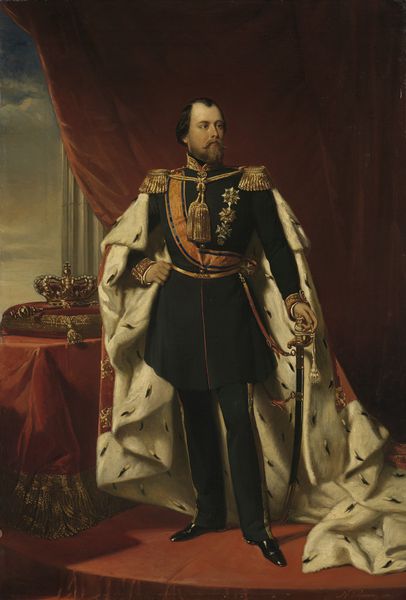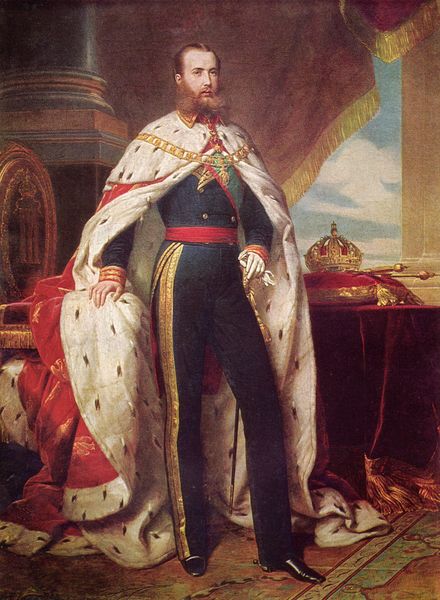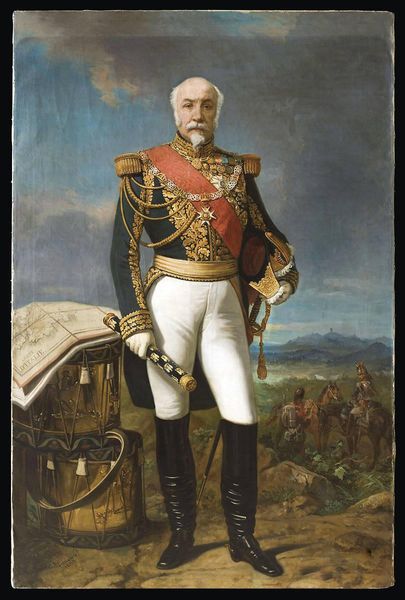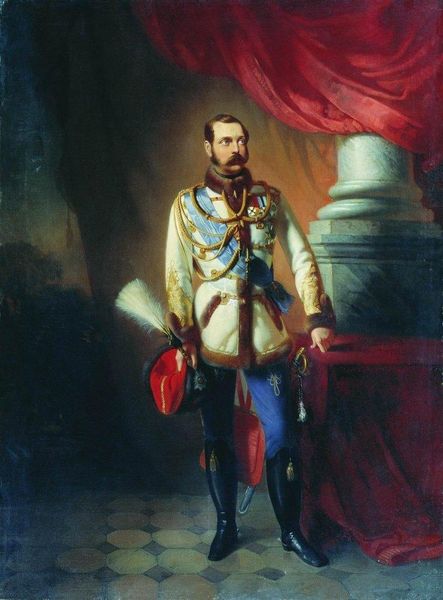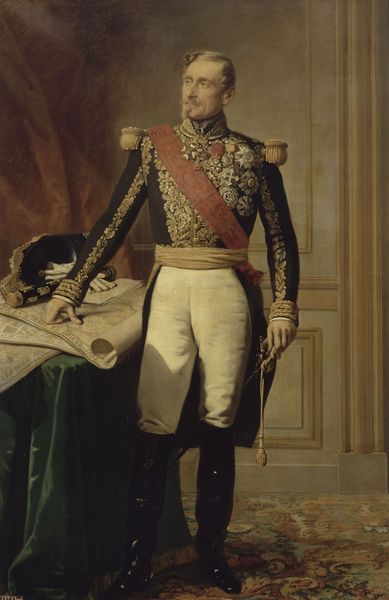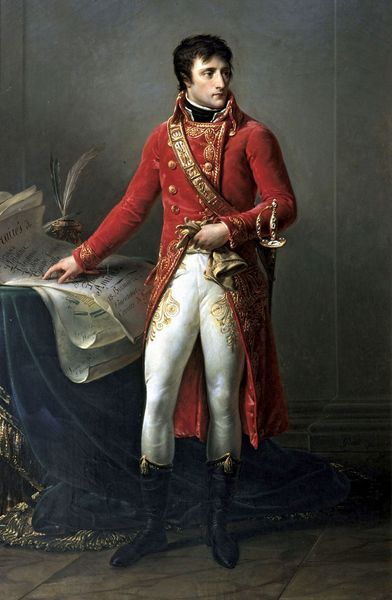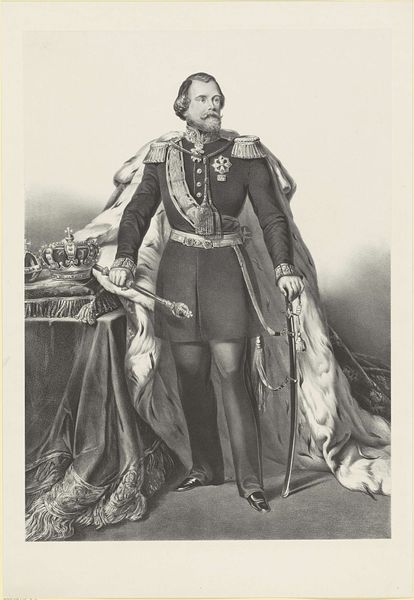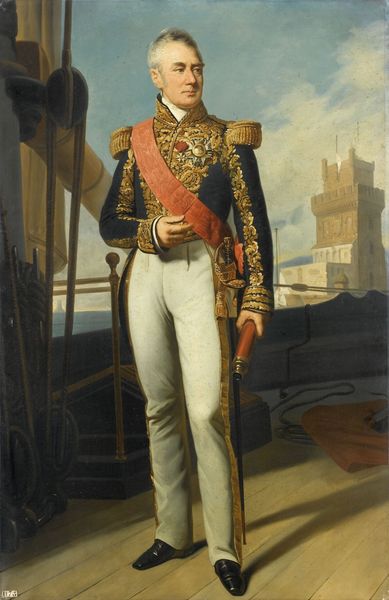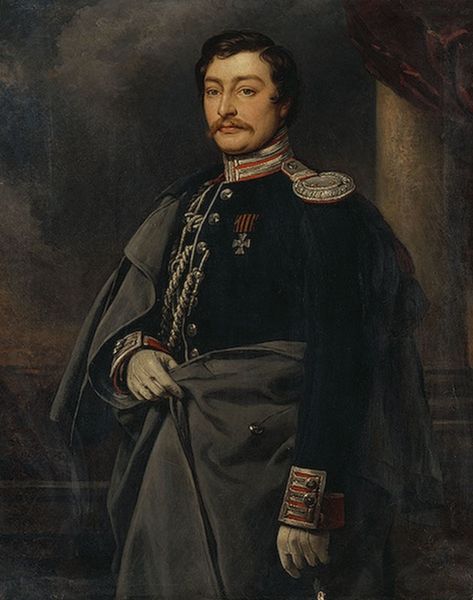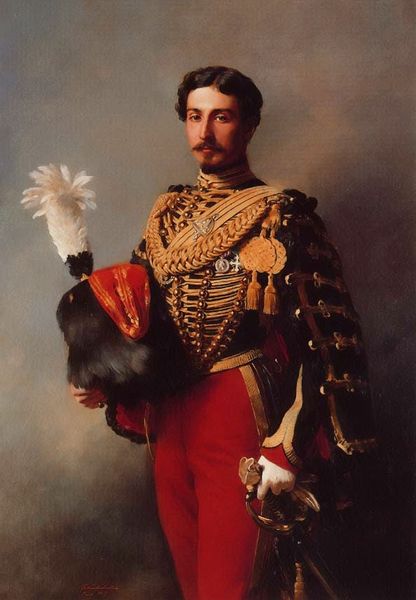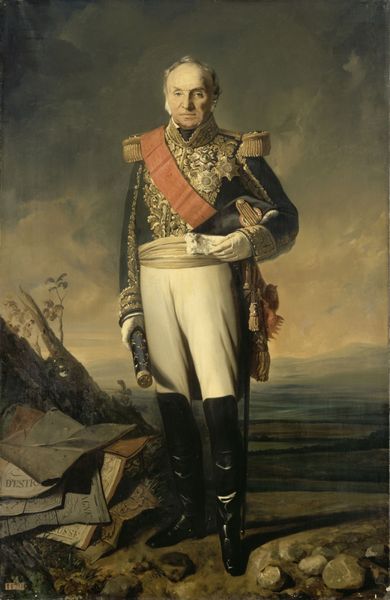
Dimensions: 240 x 155 cm
Copyright: Public domain
Editor: Standing before us is Franz Xaver Winterhalter's "Portrait of Emperor Napoleon III," painted in 1855 with oil on canvas. The scale is impressive, but honestly, I find the composition rather staged and formal. How do you read this piece, considering its historical moment? Curator: The staging *is* precisely the point, isn't it? We have to see it through the lens of the Second Empire's need for legitimacy. Napoleon III, desperate to connect himself to the legacy of his uncle, uses the visual language of monarchy to construct an image of power and stability. Think of this as political marketing in paint. The trappings of royalty, the opulent setting… they all contribute to that message. Does it convince you? Editor: I suppose it highlights how self-conscious the regime was about projecting an image. But wasn't this image of power being challenged at the time? Curator: Precisely. The Revolution of 1848 was recent history, and republican ideals were still potent. Winterhalter's portrait tries to assert the permanence and inevitability of the Second Empire in the face of those challenges. The very act of creating this portrait and displaying it publicly became a statement in itself, shaping public perception and aiming to solidify Napoleon III's position amidst social and political unrest. It is history writ in oil paints. Editor: So it's less about Napoleon III as a man and more about what the painting *does* in the political landscape? Curator: Exactly. Consider how institutions like the Salon exhibited such works, reinforcing official narratives and suppressing dissenting voices. It's crucial to recognize that artistic expression often occurs within and is influenced by institutional frameworks and political realities. Editor: I’d never considered a portrait quite this way before; it opens a new lens on art's relationship to power. Thanks for pointing this out! Curator: It reveals how carefully constructed the image of authority always is, doesn’t it? Food for thought!
Comments
No comments
Be the first to comment and join the conversation on the ultimate creative platform.
